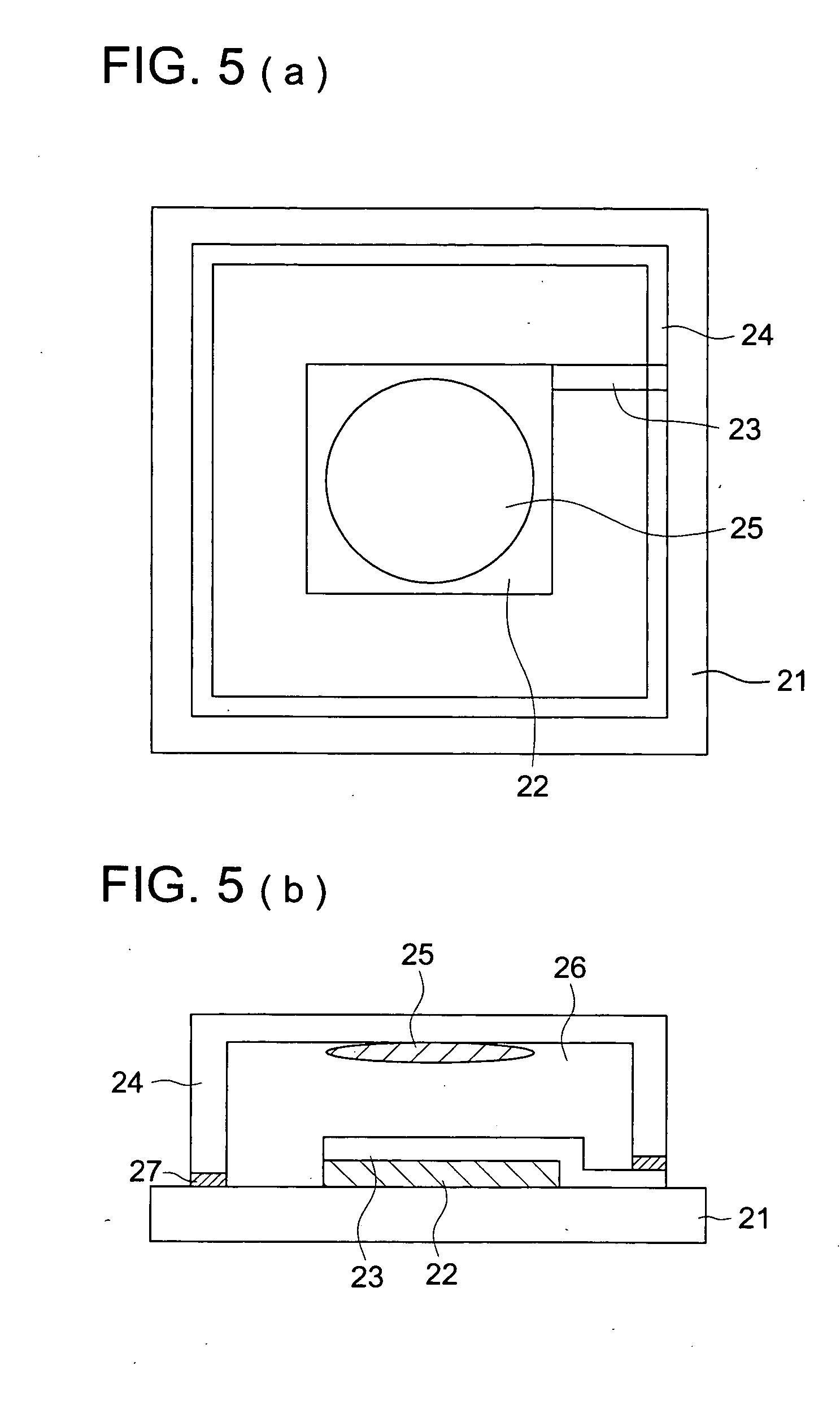Organic electroluminescent element, illuminator, display and compound
an electroluminescent element and organic technology, applied in the field of organic electroluminescent elements, illuminators and displays, can solve the problems of not being fully satisfactory, unable to meet the external quantum efficiency of around 6%, and not being able to achieve the emission efficiency and heat resistance suitable for practical use, and achieve high emission efficiency, long life, and high emission intensity
- Summary
- Abstract
- Description
- Claims
- Application Information
AI Technical Summary
Benefits of technology
Problems solved by technology
Method used
Image
Examples
example 1
<Preparation and Evaluation of Organic EL Element Samples 1-1 through 1-29>
A pattern was formed on a substrate (manufactured by NH Technoglass Co., Ltd.) on which a 100 nm ITO (indium tin oxide) was provided to prepare an anode. Then the resulting transparent substrate having the ITO transparent electrode was subjected to ultrasonic washing in isopropyl alcohol and dried by a dry nitrogen gas and subjected to UV-ozone cleaning for 5 minutes.
Thus obtained transparent substrate was fixed on a substrate holder of a vacuum evaporation apparatus available on the market. Next, α-NPD, CBP, Ir-1, BC and Alq3 were independently put into five resistive heating molybdenum boats, and the boats were set in the vacuum evaporation apparatus.
After pressure in the vacuum tank was reduced to 4×10−4 Pa, α-NPD was deposited on to the transparent substrate to form a hole injecting and transporting layer of a thickness of 20 nm. After that, the boat carrying CBP and the boat carrying Ir-1 were ...
example 2
<Preparation and Evaluation of Organic EL Element Samples 2-1 through 2-14>
Organic EL element samples 2-1 through 2-14 were prepared in the same manner except that CBP in the light emission layer and BC in the hole blocking layer were replaced by the compounds listed in Table 2.
Each of organic EL element samples 2-1 through 2-14 was subjected to the measurements of emission intensity and half-life period which were the same as those carried out in Example 1. The results were shown in Table 2.
Each of the results was given by a relative value when each of emission intensity, external quantum efficiency, half-life period of the organic EL element sample 2-1 was represented as 100.
TABLE 2OrganicELLight emissionelementlayerHoleExternalHalf-sampleHostMolecularblockingEmissionquantumlifeNo.compoundweightcompoundIntensityefficiencyperiodRemarks2-1CBP456.6BC100100100Comp.2-2CBP456.6B-1106104111Comp.2-3H-1498.6BC113109113Comp.2-4H-1498.6B-1117116141Inv.2-5H-1498.6B-7119120138Inv.2...
example 4
(Example of a Illuminator, Using Organic EL Element of White Emission)
Organic EL element sample 2-9W was prepared in the same manner except that Ir-1 used in the light emission layer of organic EL element sample 2-9 was replaced by a mixture of Ir-1, Ir-9 and Ir-12. An illuminator was obtained by covering the non-emitting surface of organic EL element sample 2-9W with a glass case. This illuminator was found to be a thin illuminator emitting white light of high emission efficiency and a long life. FIG. 6 is a schematic view of the illuminator, and FIG. 7 is a cross-section of the illuminator. An organic EL element 101 was covered by a glass cover 102, followed by being connected with a lead wire (anode) 103 and a lead wire (cathode) 104. 105 is an anode and 106 is an organic EL layer. Inside of the glass cover was filled with nitrogen gas 108 and a water retention agent 109 is provided.
PUM
| Property | Measurement | Unit |
|---|---|---|
| Molecular weight | aaaaa | aaaaa |
| Electroluminescence | aaaaa | aaaaa |
| Phosphorescence quantum yield | aaaaa | aaaaa |
Abstract
Description
Claims
Application Information
 Login to View More
Login to View More - R&D
- Intellectual Property
- Life Sciences
- Materials
- Tech Scout
- Unparalleled Data Quality
- Higher Quality Content
- 60% Fewer Hallucinations
Browse by: Latest US Patents, China's latest patents, Technical Efficacy Thesaurus, Application Domain, Technology Topic, Popular Technical Reports.
© 2025 PatSnap. All rights reserved.Legal|Privacy policy|Modern Slavery Act Transparency Statement|Sitemap|About US| Contact US: help@patsnap.com



